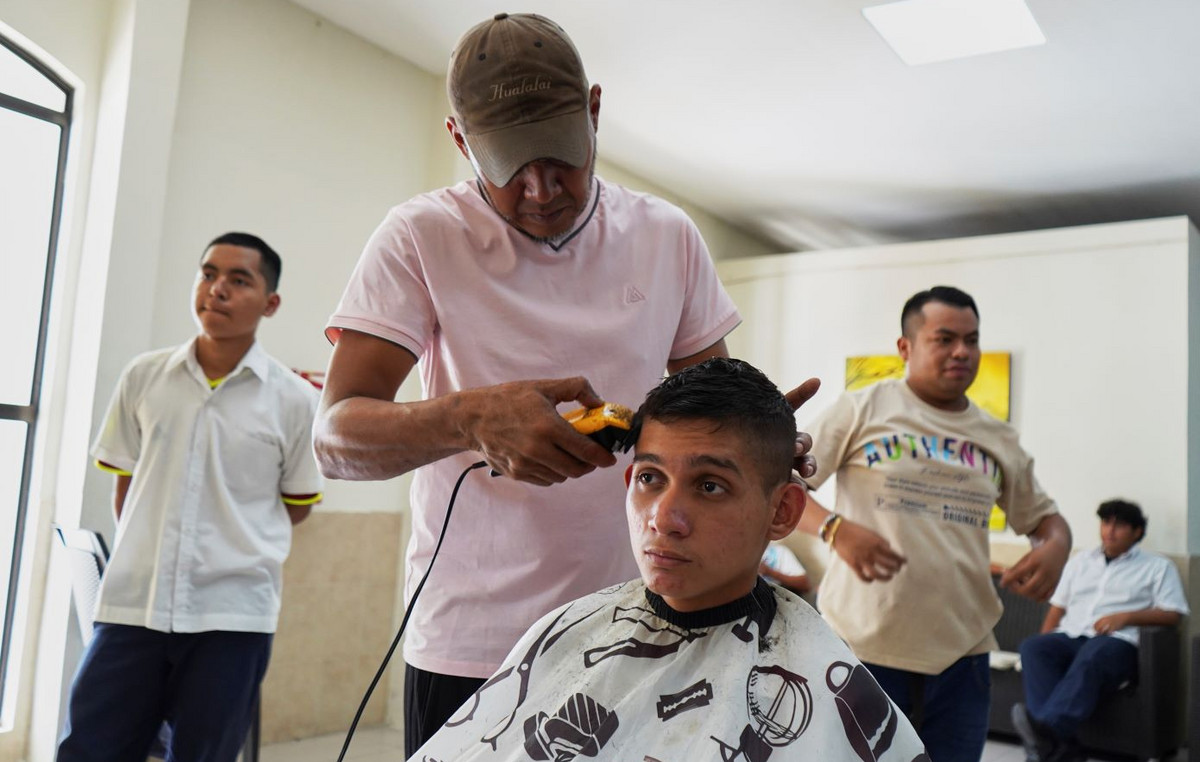A month after Israel cut the Humanitarian aid from the Gaza Strip, assistance agencies claim that the humanitarian situation deteriorated dangerously, with the situation of two million civilians aggravated by the intensive Israeli military operations.
The United Nations and several NGOs, as well as civilians in Gaza who talked to the CNN They report that hunger is spreading, there is less access to drinking water and fleasted outfall fields.
Problems that afflict the territory population in the last 18 months have been accentuated by the new offensive launched by the Israeli army in March, which included several withdrawal orders.
The Israeli government interrupted the supply of food and other humanitarian aids to Gaza before the offensive in an attempt to press Hamas to release more hostages and impose new conditions for the extent of ceasefire.
Israel also stated that Hamas intercepts and diverts humanitarian aid loads to the territory, an accusation confirmed by the United States last May.
More than 280,000 people have been displaced in the last two weeks, and two thirds of the Gaza territory are now forbidden areas, according to the United Nations Office for the Coordination of Humanitarian Affairs (OCHA).

Assert al-nabeeh, spokesman for the municipality of Gaza, told the CNN That after several recent departure orders “people are literally being displaced everywhere, on main roads, public parks, near dumps, squares and even buildings that are on the brink of collapse.”
“Even before the last displacement orders, only 40% of the city had access to water,” continued Al-Nabeeh. He estimated that 175,000 tons of garbage accumulated around the city.
The high OCHA employee for Palestinian territories, Jonathan Whittall, said earlier this week that a “boundless war” was underway in Gaza.
Hunger and malnutrition are constant threats
In a report released on Friday (4), the office said: “Gaza faces renewed risk of hunger and malnutrition, as the total load block, now entering the second month, practically interrupts all the distribution of flour and closes all subsidized bakeries.”
The World Food Program (WFP) reported on Thursday (3) that every 25 bakeries subsidized in Gaza closed for lack of cooking and flour.
Adding that more than one million people have run out of basic baskets in March, and although the supply of hot meals continues, the “current supplies will last two weeks at most.”
The Israeli agency responsible for the coordination of Gaza aid deliveries claims that there must be “a structured monitoring and entry mechanism” to prevent Hamas from seizing humanitarian supplies and ensuring that organizations operations remain “neutral and impartial.”

The coordinating agency of government activities in the territories of Israel has stated that a new mechanism that is preparing “will support help organizations, increase supervision and responsibility, and ensure that assistance reaches the needy civilian population rather than diverted and stolen by Hamas.”
The mechanism was presented to international help organizations, according to a COGAT employee, but the use is conditioned to a ceasefire agreement or a change in the government directive.
The WFP states that about 89,000 tons of food waits outside Gaza, while the shortage of food inside is raising prices dramatically.
A bag of wheat flour costs 450% more than a few weeks ago.
Lack of access to water and sanitation
Meanwhile, OCHA claims that access to water remains “severely limited” – with two thirds of Gaza families unable to access six liters of drinking water per day.
After an improvement in water production and supply during the recent ceasefire, agencies now fight to repair and maintain the infrastructure.
This is also affecting sanitation in areas increasingly crowded with displaced people.
“Sanitation conditions throughout the Gaza range remain alarming,” the office reported, with makeshift places of displacement on the infested coast of fleas and mites.
Biden administration repeatedly pressured the Israeli government to allow more humanitarian aid in Gaza, including pausing a pump loading due to concern for the civilian population in the coastal territory.
But this pressure practically disappeared under the Trump administration.

Gavin Kelleher of the Norwegian Council for Refugees, said at the end of March that “more than one million people continue to desperately in desperate tents in Gaza”, but their organization “has almost nothing to distribute, although they still see these massive transfers happening daily.”
“Many people, without alternative shelter, are being in structurally precarious and damaged buildings, where incidents of buildings are still registered with men, women and children,” Kelleher added.
In recent weeks, an average of 100 children have been killed or mutilated daily in Gaza, according to the United Nations Children’s Fund (UNICEF).
The agency’s executive director, Catherine Russell, said the region’s children “were again plunged into a cycle of deadly violence and deprivation.”
Unicef explains that she and other agencies “have failed to provide clothes and other essential items even for the most vulnerable displaced children, who only have the clothes they are wearing.”

Hospitals in Gaza overcrowded after resumption of Israeli attacks
With the increase in casualties since the end of ceasefire, the World Health Organization reports that Gaza hospitals are overloaded with patients.
According to the organization, the Al-Shifa Hospital, in the north of the territory, is attending 400 people daily, almost triple the average of 140 before the resumption of hostilities on March 18.
Dr. Fadel Naeem, director of the Arab Al-Ahli Baptist Hospital in the city of Gaza, shared with CNN that your unit was overloaded with the number of bodies and injured coming.
Only on April 3, he said 128 injured people had arrived “and the hospital simply has no capacity to deal with this volume due to continuous blockage to the health sector.”
Naeem said the hospital was forced to “prioritize”, performing surgeries only for those with more likely survival.
“Tragically, while waiting for care, some of the injured died due to lack of resources, operating rooms and medical staff,” added the director.
Philippe Lazzarini, head of the United Nations Works and Relief Agency, which leads the UN efforts in Palestinian territories, said “people are hungry, chaos and looting have returned … People are exhausted for still locked on a tiny piece of land.”
This content was originally published in humanitarian crisis in Gaza gets worse after a month of Israeli block on the CNN Brazil website.
Source: CNN Brasil
Bruce Belcher is a seasoned author with over 5 years of experience in world news. He writes for online news websites and provides in-depth analysis on the world stock market. Bruce is known for his insightful perspectives and commitment to keeping the public informed.







